
Sage is a favorite herb among gardeners, home DIYers, and home cooks alike.
Not only is it an incredibly easy herb to grow, thriving in the worst of conditions, but it also has so many uses beyond the garden and kitchen.
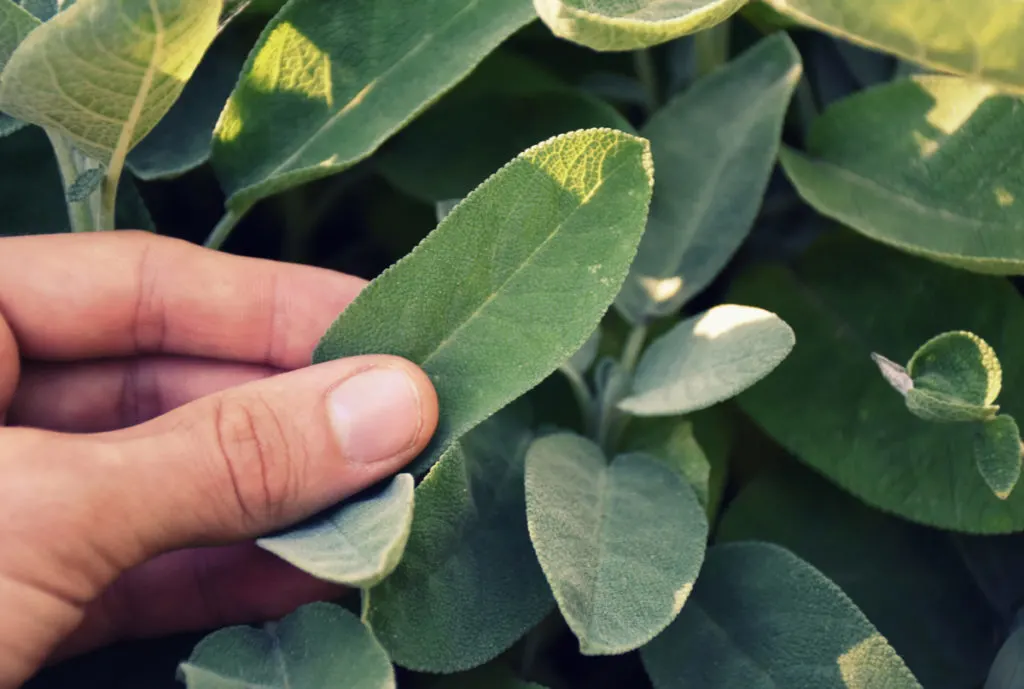
Its Mediterranean heritage allows it to grow in areas that many other plants hate. It thrives in hot, dry climates and needs very little water (see, we told you it’s easy to care for).
Make sure you’ve opted for an edible variety, like garden sage, purple sage, and even tri-color sage.
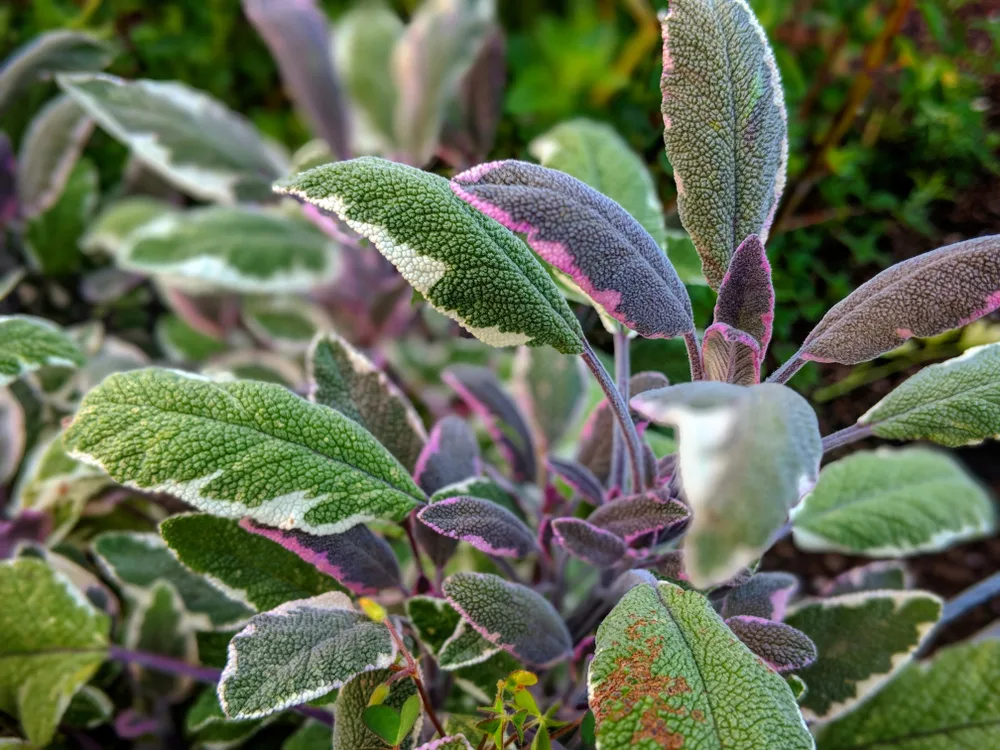
No matter your chosen variety, it‘s guaranteed to look good in your garden, attracting beneficial insects while repelling other garden pests.
If that isn’t enough of a reason to grow sage, then these 14 brilliant uses will surely convince you.
In The Pantry…
1. Sage Infused Oil
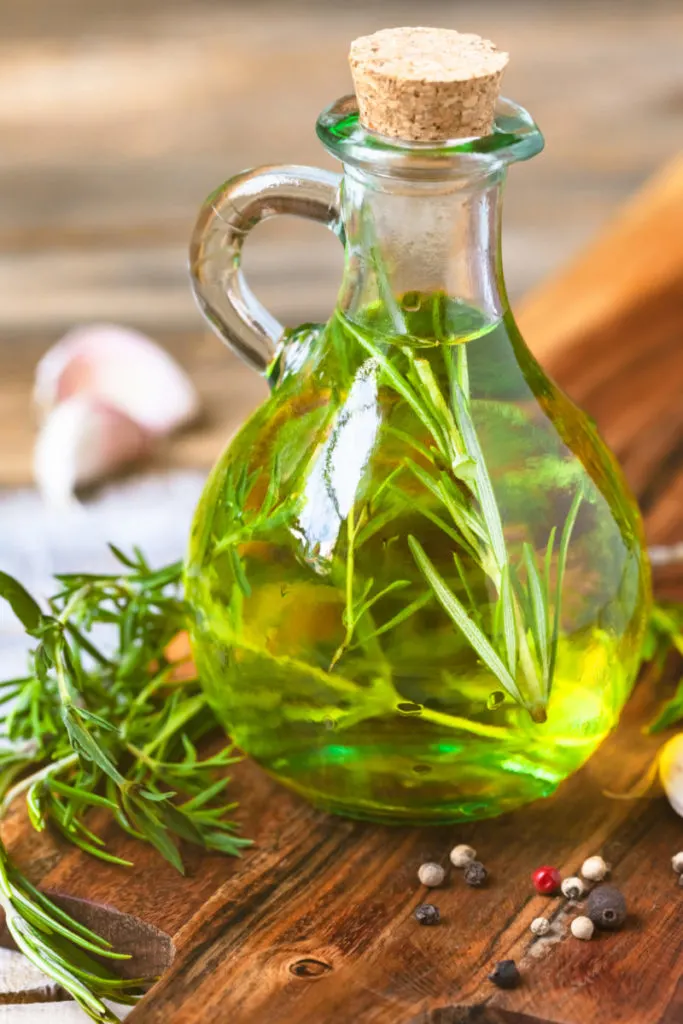
Sage-infused oils make great instant additions to meals and they last forever and a day. Plus, they’re simple and easy to make. But, by far the best thing about sage oils is that they introduce the richness of sage to any dish without overpowering the other flavors.
All you need is a few clean glass bottles with an air-tight seal or oil dispenser, a bottle of the cooking oil of your choice (olive oil works well) and about half a cup of sage leaves. Fresh leaves work best, but dried leaves can also be used.
Next, toss your oil and sage leaves into a pot or saucepan and heat over medium heat. Pour your oil and leaves into a sterilized glass jar once it’s hot. This takes about five to ten minutes.
Place your jar away from direct sunlight and let the oil sit until it’s completely cooled down. Next, using a sieve, strain your sage oil into your chosen bottle or oil dispenser, and viola!
You now have a delicious sage oil to spice up a plethora of meals – particularly poultry dishes – without overwhelming the senses.
2. Sage Butter
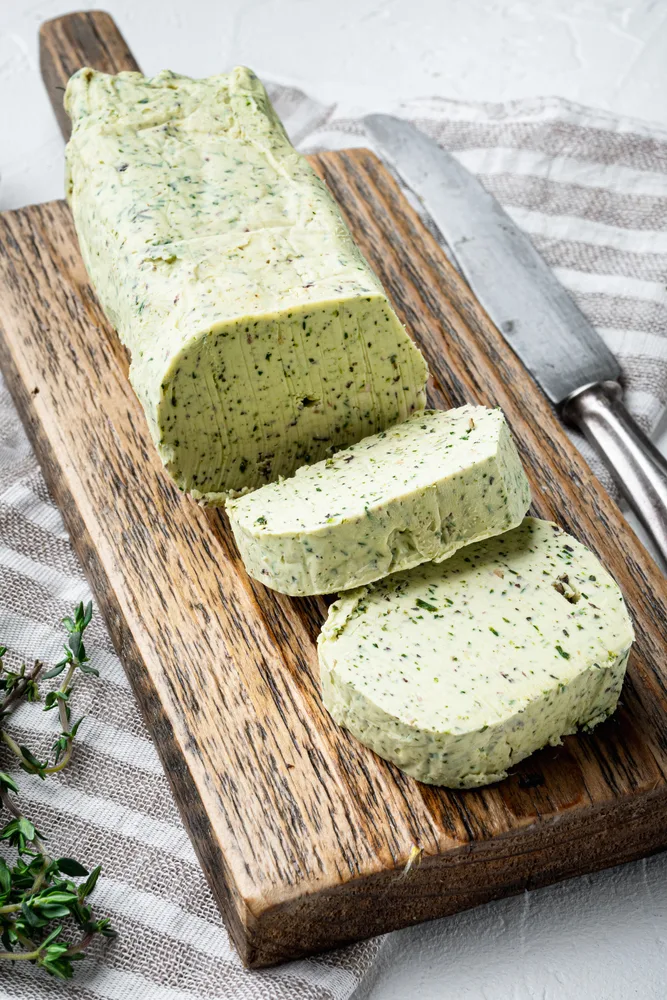
Making your own butter seems like a daunting and difficult task. But you’d be surprised how easy it is.
Sage-flavored butter can be melted over veggies or grilled chicken for a punch of flavor. You can even spice up your morning pancakes by cooking them with sage butter.
Sage butter is quite simple to make. You’ll need some cream, sage leaves, a tiny bit of salt, and a handy food processor. You can follow the full process here.
Softened store-bought butter can be infused with sage leaves too, working just as well as an entirely homemade batch. All you need is some butter and sage leaves. Cook and melt your butter over medium heat and gradually add your sage leaves. Once the butter has browned and the sage leaves have become crispy, it’s ready to be drizzled over your meal.
3. Sage Seasoning Salt
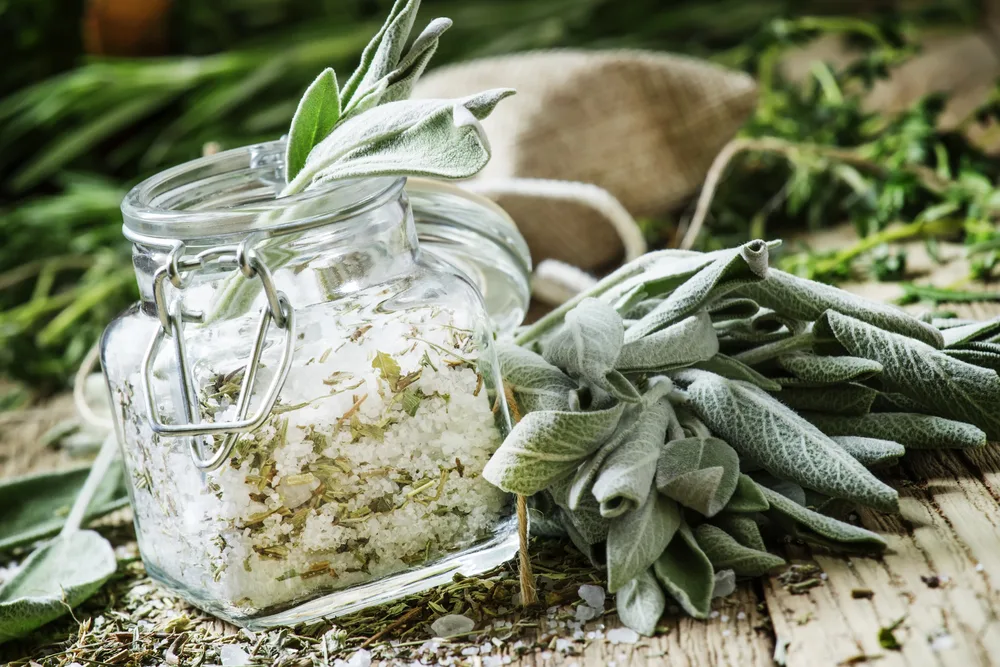
A pinch of salt goes a long way, but why not spruce it up a bit with some sage and rosemary? The flavor packs quite a punch, making any meal delicious. You can even use your sage and rosemary seasoning salt as a meat rub.
You’ll need:
- 1 cup of course sea salt
- ½ cup of rosemary leaves
- ¾ cup of sage leaves
- 2 tablespoons of black peppercorns
Throw your sage and rosemary leaves into a food processor or blender along with the peppercorns and two tablespoons of salt. Pulse it all until it becomes like sand. Mix the sandy herb mixture with the rest of the salt and spread it out on a baking sheet.
Bake it all for 15 minutes at 250F. Once cooled, store it in an air-tight container.
In The Kitchen…
4. Sage and Salads
You’re probably thinking that this is an odd pairing. Sage has a taste profile very different from some ‘traditional’ salad herbs. But, when matched with the right salad ingredients, you’ll be having sage salads with every meal.
For a refreshing summer salad, you could make this delicious farm salad. It’s super easy to throw together and pairs well with several meals.
The best salad ingredients that ‘pear’ perfectly (excuse the pun) with sage are pears and walnuts.
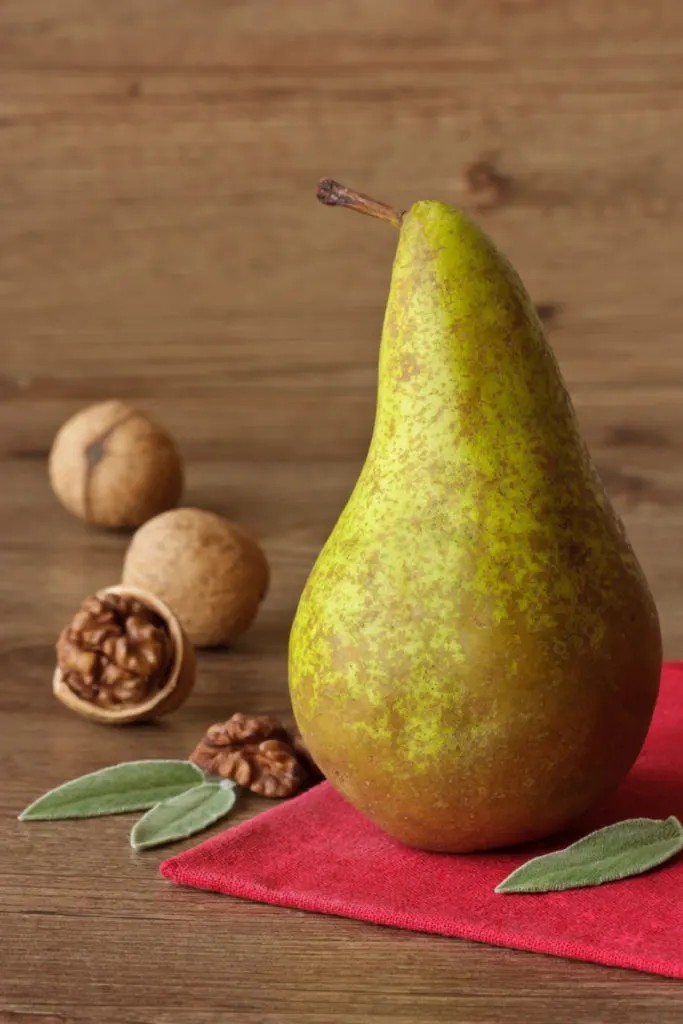
Group all three together for a yummy salad that brightens any gloomy winter day. You can get the relatively simple recipe at Olivado.
5. Sage in Soups
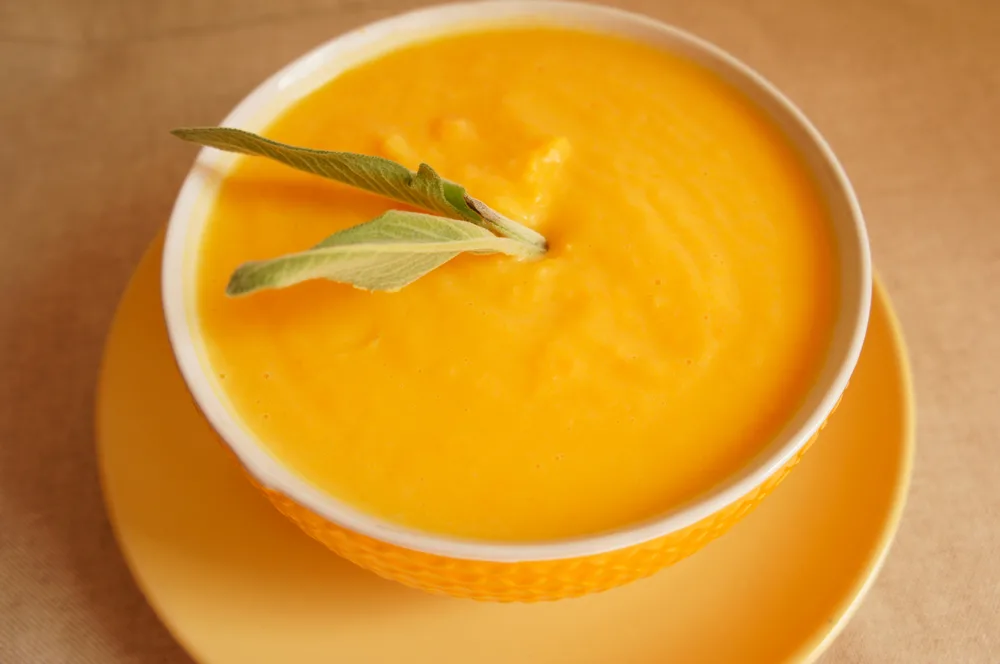
Speaking of winter, let’s chat about soups.
Soups are a staple during the icy cold months. A simple, wholesome tomato soup benefits from an extra kick to combat the cold. Sage does exactly that, creating delicious, multidimensional soups that’ll warm you up all winter long.
Sage, butternut, and sweet potato make a great match, especially when paired in this creamy butternut and sage soup.
6. Sauces
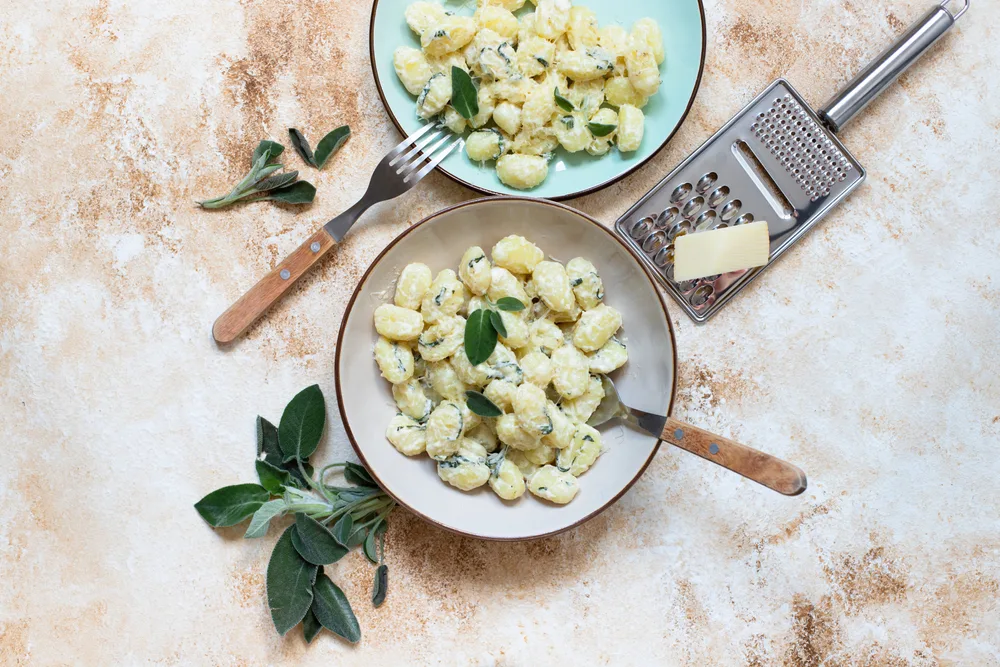
Much like soups, the rich, earthy flavors of sage add some extra oomph to sauces too.
Take the previously mentioned drizzling browned sage butter recipe, add some pepper, garlic, and salt and you’ve got yourself a browned butter sauce for pasta or roasted chicken.
Denser, creamier sauces become even more powerful with added sage. Sage and béchamel go great together for a rich, cheesy sauce for pasta, or chicken schnitzel (a personal favorite).
Take your meal to the next level with this simple and quick 15-minute sauce.
7. Sage Bread
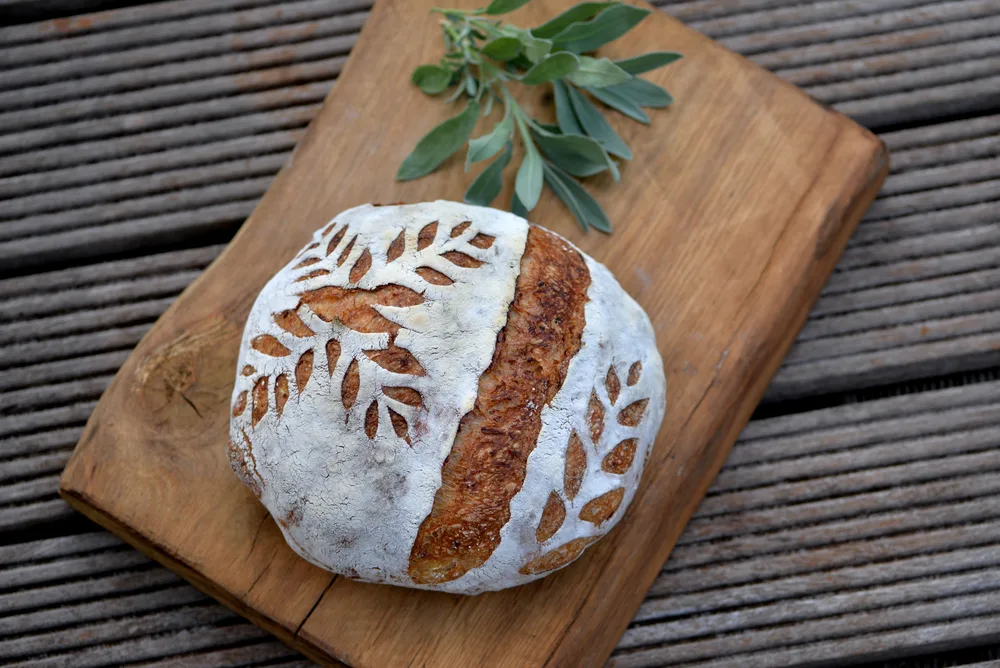
Spice up your plain loaves with some herbs, specifically rosemary and sage (an unbeatable combination). Simply add the fresh herbs to your dough while you’re kneading it. You’ll be well on your way to a warm rosemary and sage bread that complements soups and salads brilliantly.
Get the full recipe here.
8. Sage in Desserts
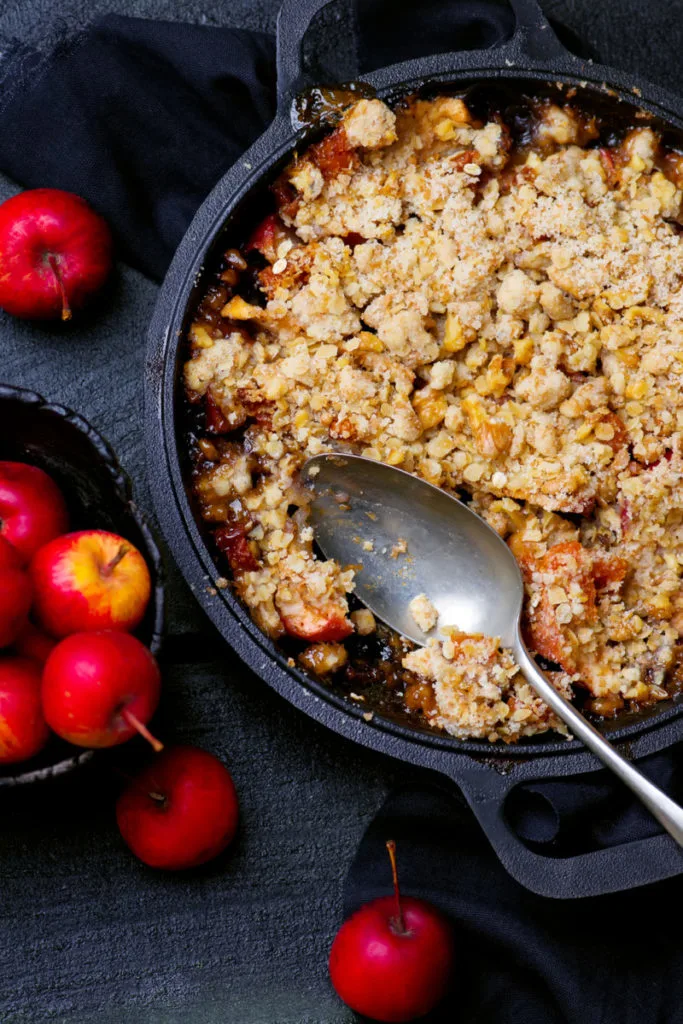
Sage’s taste profile is often difficult to pin down, but it’s not easy to miss. Its minty, lemony, earthy taste profile is powerful. You may not think of adding sage to desserts, but its earthiness adds a much-needed contrast to some plainer sweet treats.
Apple crumble, for example, is an American favorite and perfectly delicious on its own, but when you throw sage into the mix, it becomes even better.
Amp up your apple crumble this winter with the full recipe here.
9. Sage Drinks
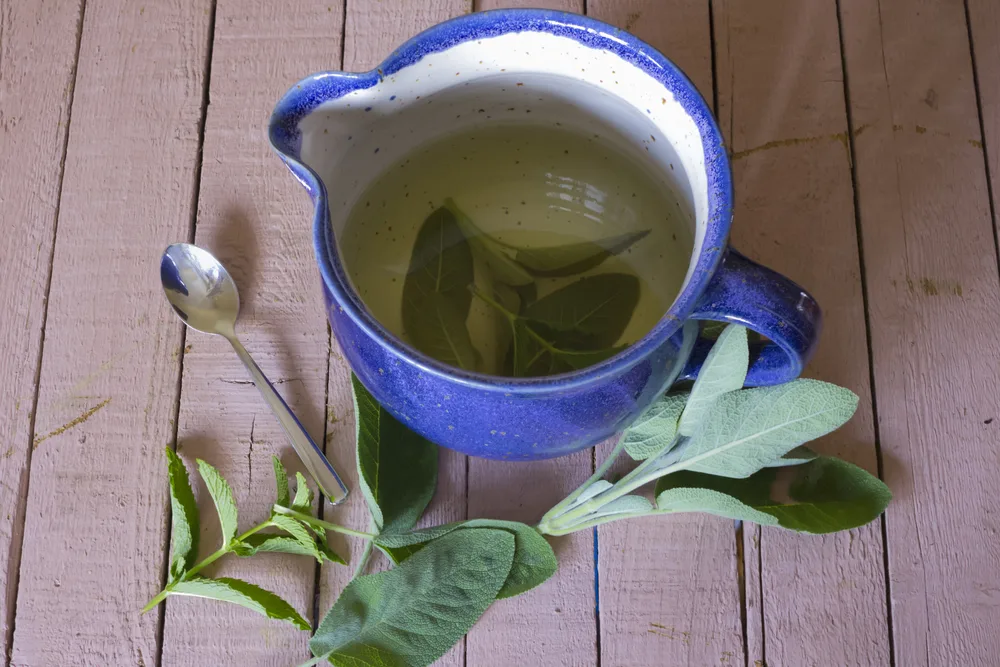
Sage not only makes a great addition to warm, hearty meals and desserts, but it also adds life to the most refreshing drinks. From herbal waters to cocktails, sage drinks are sure to become a staple in your home.
Start or end your day with a relaxing cup of sage herbal tea. Hot or cold, this tea is packed with floral flavors and can even help soothe a sore throat.
Or, if you’re looking for a healthy way to get rid of some pent of frustration from a long day’s work, then a tequila sage smash cocktail is for you.
Smash cocktails are some of the easiest drinks to make. You quite literally smash your ingredients together, toss your chosen alcohol in and give it all a shake. Once strained, top it off with some garnish and you’re good to go.
Go to cakenknife for the full recipe and how to.

In truth, sage can be used to enhance the flavor of many cocktails or mocktails.
In The Home…
10. Smudging
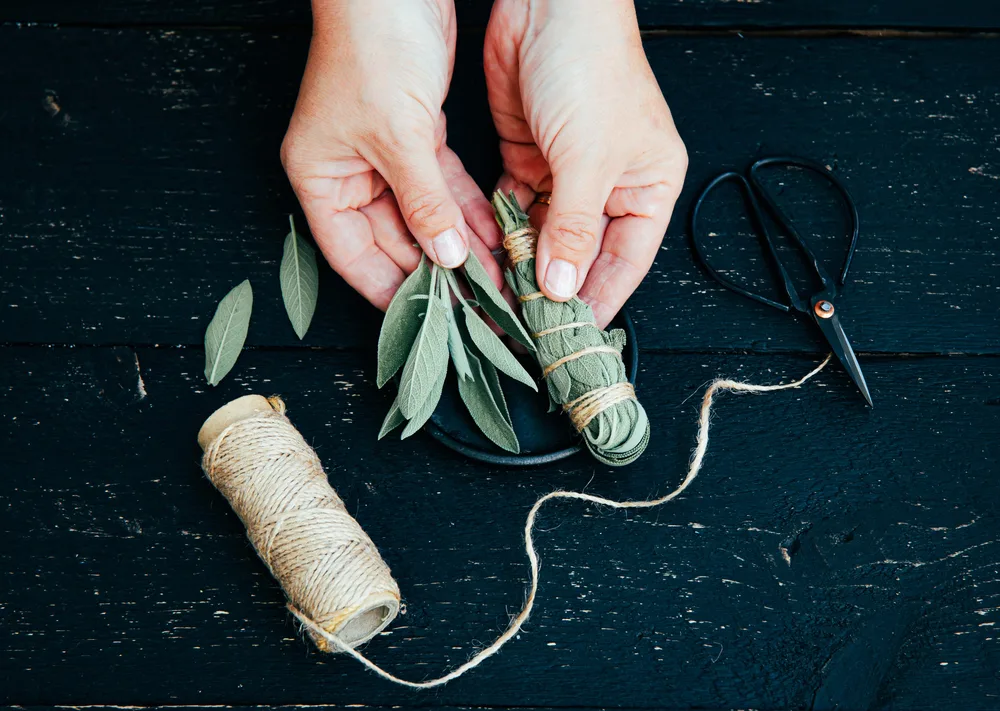
One of the things sage is most famous for is smudging.
The practice of smudging – burning herbs – has been around for centuries. Some people smudge sage to cleanse a space of negative energies. Others use sage to cleanse the air of bacteria and viruses.
While many associate smudging sticks with wellness websites or a yoga instructor’s Instagram, smudging isn’t exclusive to them. Its bacteria cleansing abilities are scientifically proven – plus, it adds an irresistible woodsy scent to your home.
Making your own smudge stick is super easy. All you need is some sage (and some extra herbs if you like – lavender, rosemary, and thyme are great options).
Fellow Rural Sprout author, Cheryl, has a great tutorial for making your own wild-foraged smudge sticks here.
Gather your chosen sprigs of herbs, creating a thick bundle. Using cotton string or another natural twine, tie your bundle at the base.
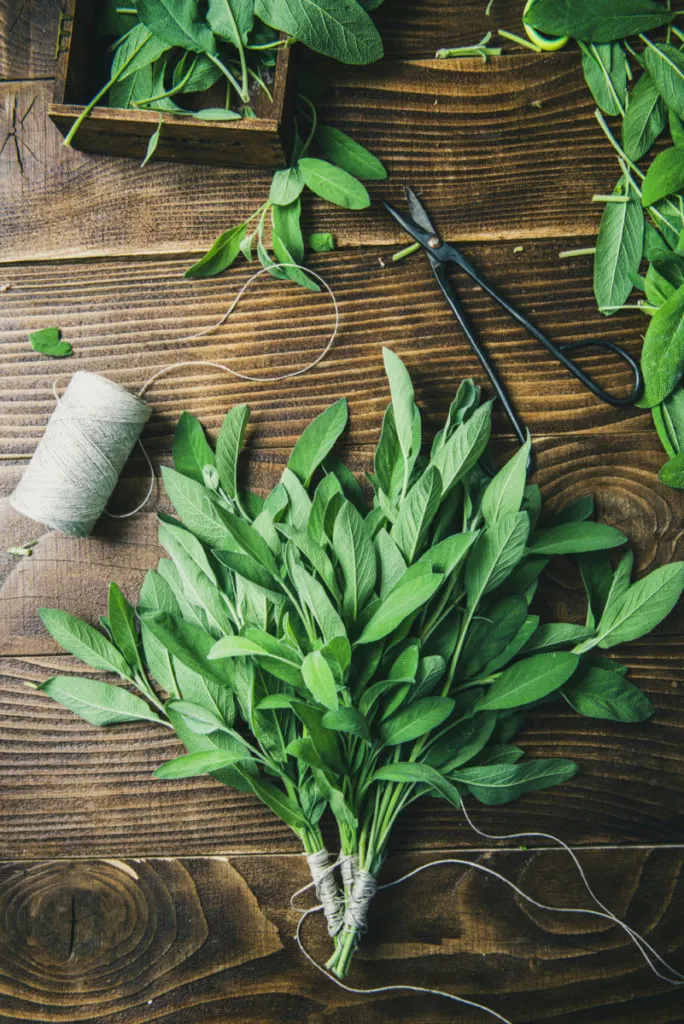
Then, starting at the center of your bundle, tightly wrap the string up and down it, making crisscrosses as you go. Cut off any excess twine.
Hang your bundle out to dry in a cool, dry room for at least a week.
Your sage stick is ready to burn if a spring or leaf breaks easily if bent. Sage sticks preserve their scent and freshness if stored in a glass jar.
11. Natural All-Purpose Cleaner
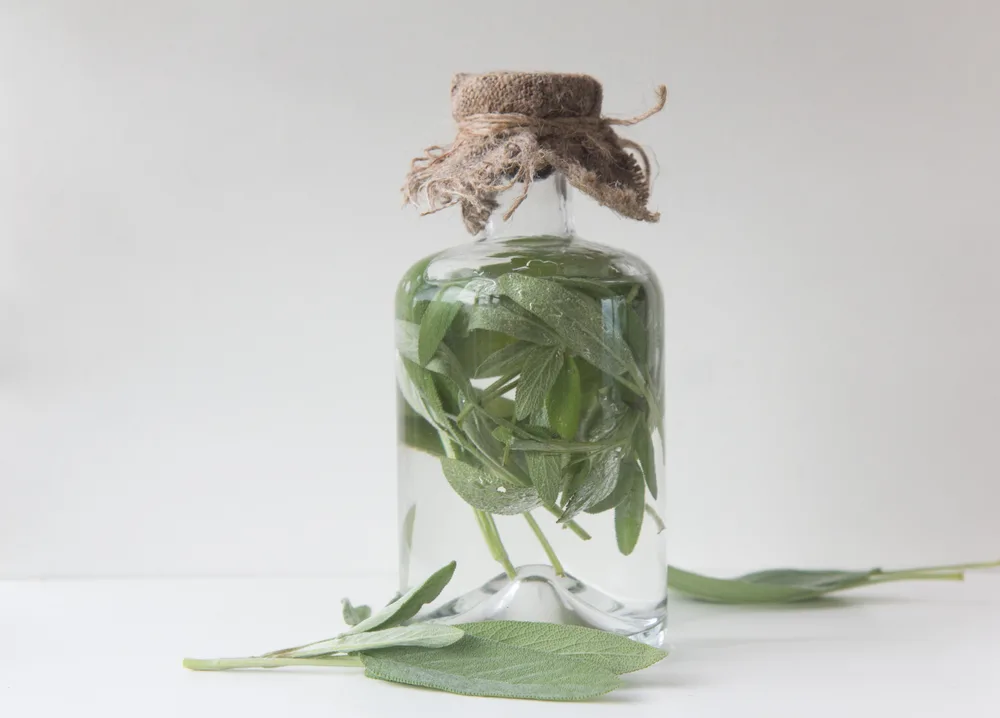
As mentioned, sage has cleansing properties, but it doesn’t have to be used specifically for cleansing air. When you add vinegar and alcohol to the mix with a dash of dish soap it makes a powerful, natural all-purpose cleaner.
You’ll need:
- Sage leaves
- White vinegar
- Isopropyl alcohol
- A drop of dish soap
- Warm water
Squeeze your fresh sage leaves, so they release their oils and scent. Next, toss your leaves in a spray bottle and pour one-part warm water, one part vinegar, and ½ part alcohol. Then, add a drop (just a drop) of dish soap and shake it all up.
The sage will infuse the cleansing mixture, masking the strong scent of the vinegar and alcohol.
Sage brings an earthy aroma as well as its antibacterial properties to this awesome natural all-purpose cleaner.
12. Sage Candles
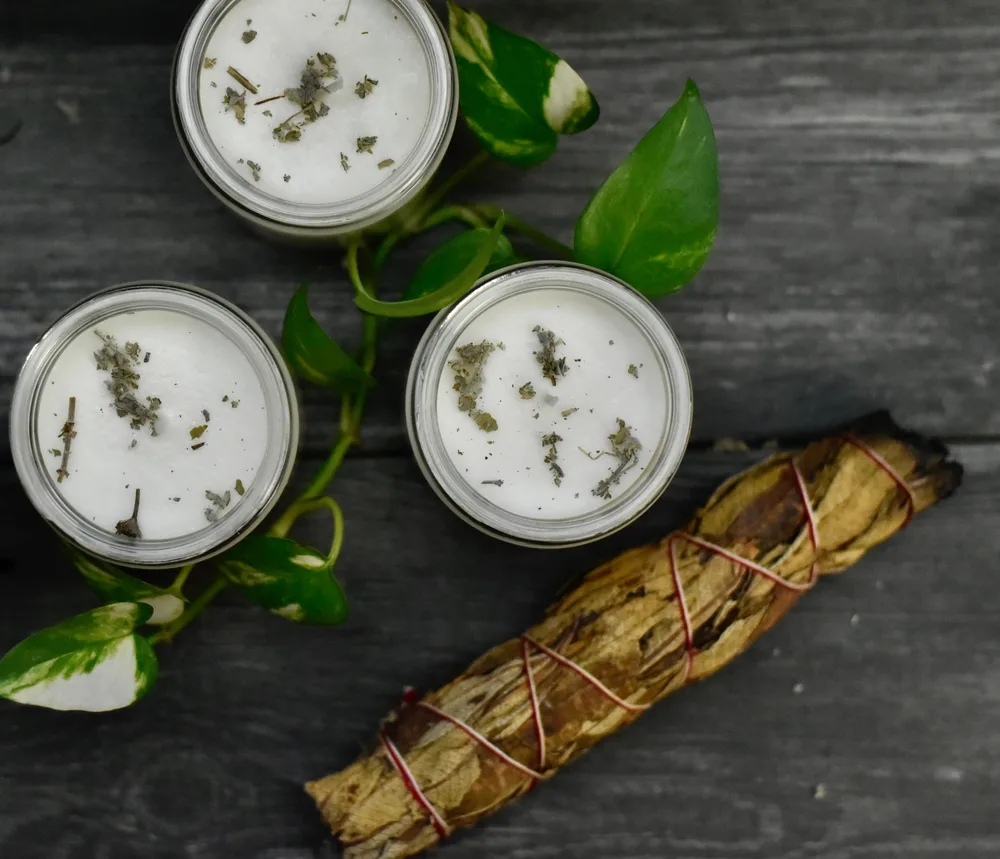
Scented candles make a home homier, adding a woodsy, earthy scent to your space.
Making your own sage-scented candles is also a great alternative to smudging. You still get all the benefits without the fuss of burning the sticks yourself.
You’ll need a wax melt, beeswax, dried sage leaves (you can dry sage leaves yourself), a wick, an oil of your choice, and, of course, a jar of some sort. For a fun feature, use old teacups instead.
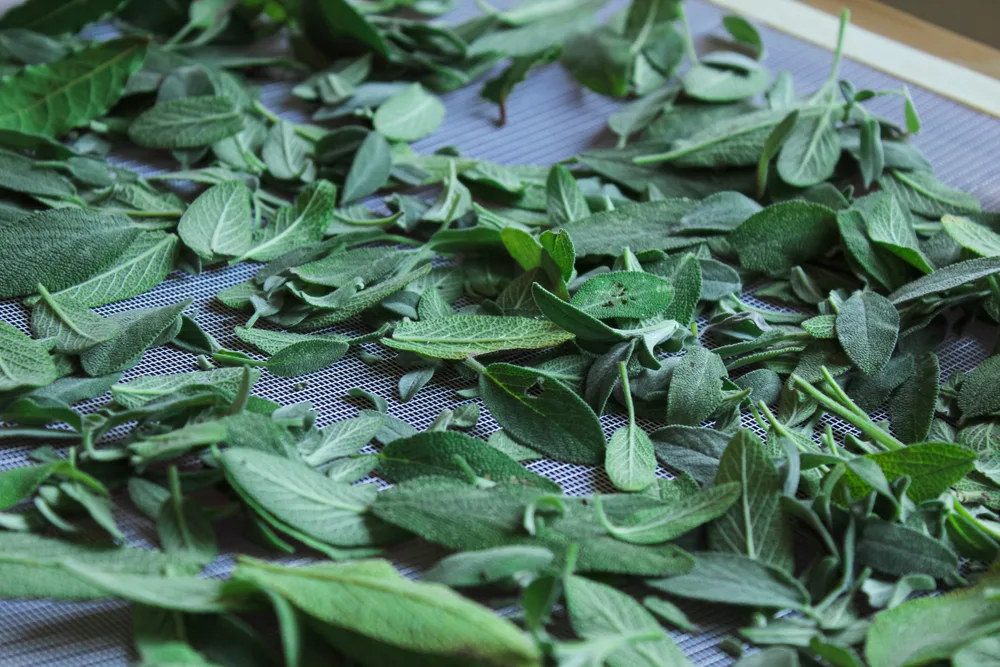
First, grind your sage leaves down – a coffee grinder works well for making a nice fine sage powder – and toss them into a large jar. Then fill the jar with your chosen wax (soy works well) and top it off with your chosen oil.
Next, double boil your jar in a pot with some water. When the wax has melted a little, add half a cup of beeswax. The beeswax helps keep the candle hard, so it doesn’t melt away too quickly.
Once everything has melted, carefully pour your sage wax mixture into your chosen candle containers. Let them cool down for about 15 minutes before adding your wick – this way it doesn’t curl away from the jar.
Once it has hardened completely, your sage candle is ready to burn.
13. Sage Wreath

If burning a sage bundle or even a candle is not for you, you can always opt to use your sage as décor instead.
Sage leaves are ideal for use in a decorative wreath, especially around the holidays. Crush some of the leaves between your fingers before your guests arrive and they’ll be treated to a welcoming, homey scent as they walk through your front door.
Get the DIY here.
14. Sage Cough Remedy
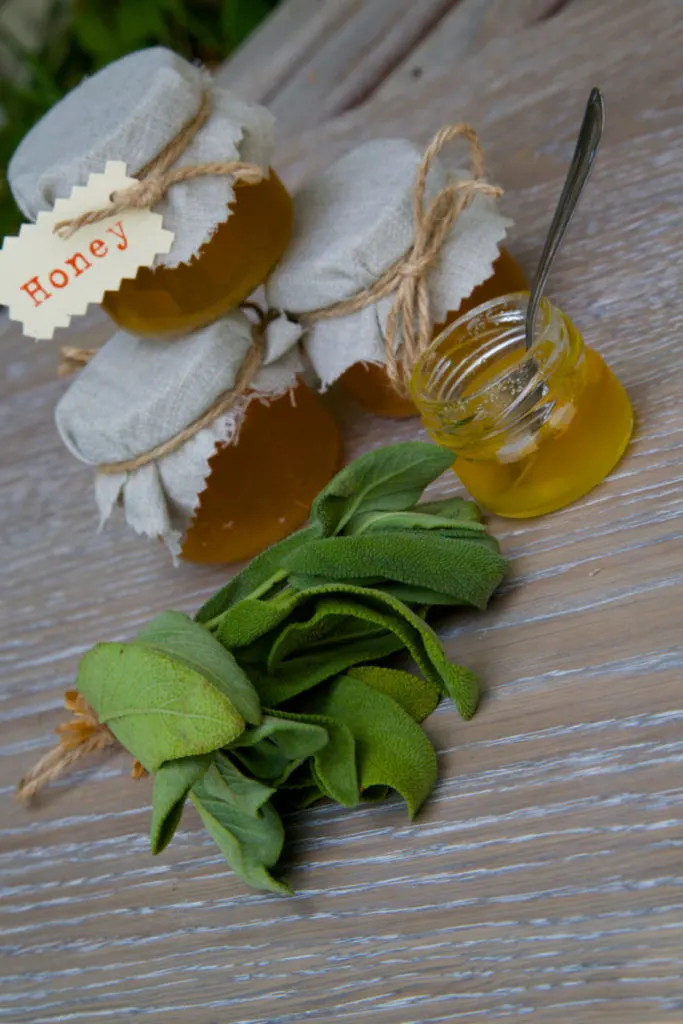
Sage has antibacterial properties which makes it great for cleansing the air and surfaces in your home. But, its antiseptic and anti-inflammatory properties make sage a popular herb for home remedies too.
A sore throat or a cough could be soothed with a warm cup of sage tea. Why not go one step further and make your own cough syrup?
You’ll need:
- 2 heaped teaspoons of finely chopped fresh leaves
- 1 tablespoon of honey
- Apple cider vinegar
Toss your sage leaves into a pot with two cups of water and bring them to a boil. Then, reduce the heat and simmer for half an hour. Strain your mixture into a measuring cup and add an equal amount of apple cider vinegar. Add your honey and mix well. Allow it to cool and store your homemade cough remedy in a clean, air-tight jar, placed in a cool, dark cupboard.
You’ll need as little as one teaspoon whenever necessary (for children, ½ a teaspoon will do).
Bonus: Use Your Sage Flowers
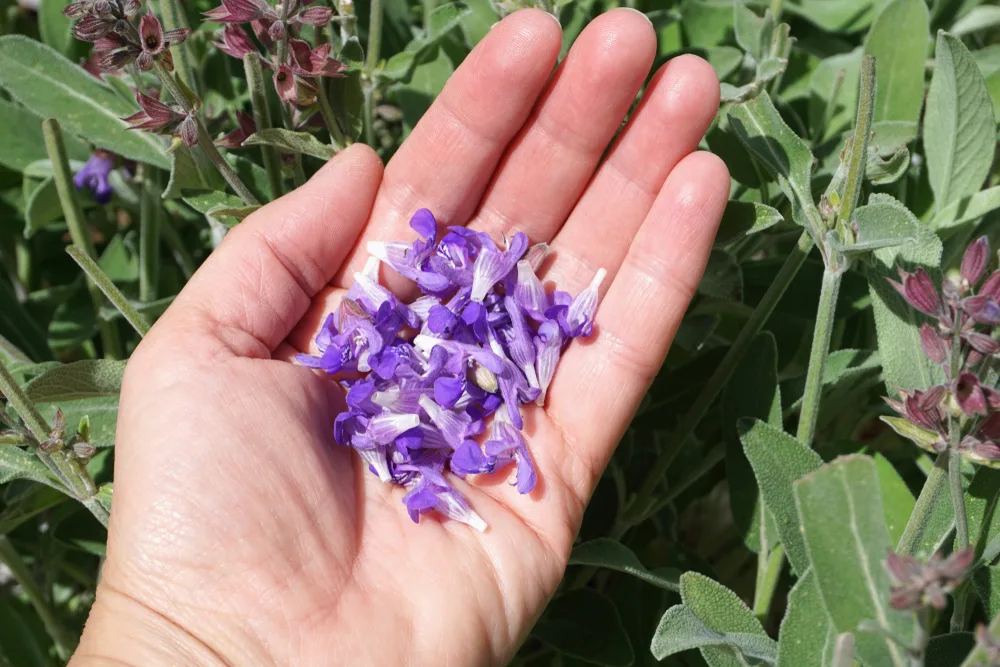
When it comes to sage, the leaves have all the fun while the flowers are often forgotten. But the beautiful flowers of your sage plants can be put to good use too.
Take a look at 16 ways to use the flowers over on GardenAndHappy.com

Get the famous Rural Sprout newsletter delivered to your inbox.
Including Sunday ramblings from our editor, Tracey, as well as “What’s Up Wednesday” our roundup of what’s in season and new article updates and alerts.

